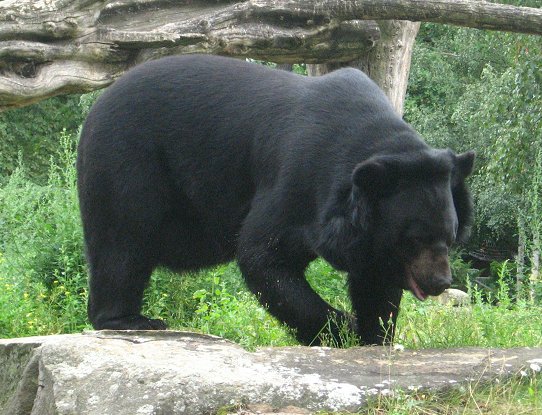

Ursus thibetanus
The Asiatic Black Bear lives in Southern Asia including Pakistan and
Afghanistan, extending across northern India into China with isolated
populations found in Japan, Taiwan, Korea and southeast Russia.
It feeds on insects, honey, fruits, nuts, berries, small mammals and carrion. It
hibernates in the hollow of a tree, after cleaning it carefully before the
hibernation. However, trees that are large enough are very hard to find, so many
bears need to sleep in rock gaps.
The Asian black bears spend most of their time alone. They usually make contact
with other bears only during the mating season. Female Asiatic Black Bears give
birth to up to three cubs that are blind and open their eyes only after about
one month. The cubs stay with their mother until about two years of age. Some
bears can live in a family of two elders and one or two cubs, in which case they
walk in a procession from the largest to the smallest, looking for food.
Asiatic Black Bears have very long claws (up to 5cm long), strong forelimbs, and
paws without fur. These adaptations make it easier for them to climb trees in
search of food and for safety.
Asiatic Black Bears have been known to walk upright (in a bipedal way) for over
a quarter mile.
The above picture was taken at the Berlin Zoo, in August 2010.
Genus Ursus
Family Ursidae
Superfamily Canoidea
Order Carnivora
Subclass Eutheria
Class Mammalia
Subphylum Vertebrata
Phylum Chordata
Kingdom Animalia
Life on Earth
Index